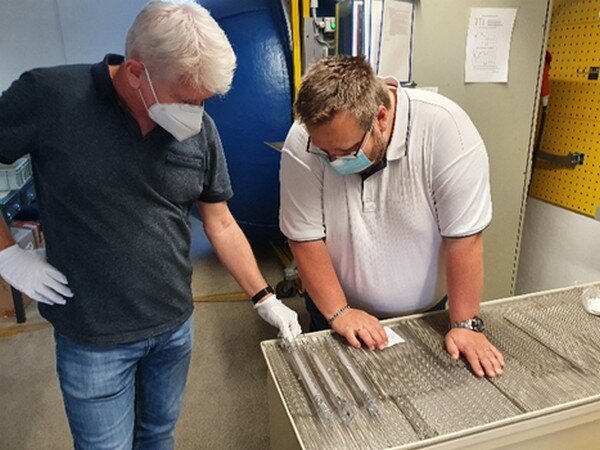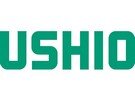
Welcome to iGrow News, Your Source for the World of Indoor Vertical Farming
Ushio Germany Presents Horturion HPS 1000W de el Supra Plus "The Highest Light Output Ever Achieved By A 1,000 W Lamp"
With the Horturion HPS 1000W de el Supra Plus lamp, Ushio Germany GmbH presents another innovation in the field of plant growth lamps. "The Horturion Supra Plus is a 1,000 W lamp with a light output of 2180 µmol/s and therefore the most efficient 1,000 W lamp ever introduced in the market", the Ushio Germany team says.
July 5, 2021
With the Horturion HPS 1000W de el Supra Plus lamp, Ushio Germany GmbH presents another innovation in the field of plant growth lamps. "The Horturion Supra Plus is a 1,000 W lamp with a light output of 2180 µmol/s and therefore the most efficient 1,000 W lamp ever introduced in the market", the Ushio Germany team says. "It offers 3.8 % more light output compared to the standard Horturion 1000 W lamp and enables growers to achieve a noticeable increase in yield and thus higher income with the same energy input."
"The Horturion Supra Plus is the answer to the demand for a 1,000 W lamp with significantly increased light output, a result of many years of exchange and closest cooperation with our customers, especially in the Netherlands, the pioneer in horticulture in Europe, if not worldwide", they continue.
The Horturion Supra Plus is compatible with all standard 1,000 W luminaires for double-ended lamps on the market and will be available as early as August 2021.
More micromoles per square meter
At 2180 µmol per second, the Horturion Supra Plus offers 3.8 % more light output compared to its 1,000 W equivalent at 2100 µmol/s.
In-house labs for the highest quality HPS lamps
Just at the end of last year, Ushio Germany, formerly BLV Licht- und Vakuumtechnik GmbH, made a clear and bold statement by discontinuing its horticulture LED lighting solutions division and clearly focusing on the development, production, and distribution of HPS lamps for this sector.
Consistently following this strategic orientation, the company has further expanded its development capacities at the Steinhöring site. Ushio’s own laboratories, equipped with the latest technology and sophisticated equipment for precise measurements and tests, have for years provided ideal conditions for innovations and world premieres. All prototypes of the legendary BLV Horturion HPS series were developed here, including the Horturion Supra Plus.
Expanded production capacities
In order to meet the increasing demand, even for high volumes, a new production facility with a total area of almost 6,000 m² was inaugurated at the Ushio Poland site back in 2017. At full capacity, one million lamps for professional greenhouse lighting can be produced here per year. With this capacity, Ushio is not only a trusted partner for lamps of the highest quality but is also able to reliably produce and deliver orders with very high quantities for large projects.
The Horturion® Supra Plus will be available from August 2021. Pre-orders are accepted as of now.
For more information:
Ushio
info@ushio.eu
www.ushio.eu
BLV
Muenchener Strasse 10
85643 Steinhoering
Germany
www.blv-licht.de
Horticulture Lighting Based on LEDs To Be Installed In Commercial Buildings, Breaking The Limitation of Plant Growth
Adding LED grow lights and smart cultivation system into commercial construction offer a solution for urban farming to enhance local food production
A new deal announced by Heliospectra, a Sweden based horticulture lighting technology provider, unveiled a new approach for achieving urban farming with LED grow lights.
(Image: Heliospectra)
Heliospectra reported that it has received an order from BBL Construction, who operates as a general contractor in the fields of commercial and institutional construction. According to Heliospectra, the two business partners are going to apply their expertise for several projects.
The partnership might indicate that LED grow light and vertical farming facilities are now considered a function to be integrated into commercial and institutional buildings, highlighting the trend of urban and indoor farming.
Increasing urban farming and indoor cultivation facilities are considered one of the prioritized projects for countries and area who used to rely heavily on imported food, as the food security issue was emphasized with the COVID-19 pandemic. Adding LED grow lights and smart cultivation system into commercial construction offer a solution for urban farming to enhance local food production.
First Indoor Basil Harvested In Delphy Improvement Center
Meulendijks has been working on the development of practical cultivation knowledge for Vertical Farms. Growth factors such as climate, light and irrigation can easily be varied in the test chambers.
The first batch of indoor-grown basil was harvested at the Delphy Improvement Centre. Since May, Lisanne Meulendijks has been working on the development of practical cultivation knowledge for Vertical Farms. Growth factors such as climate, light and irrigation can easily be varied in the test chambers.
Because of this flexibility, experiments can be conducted to see how cultivation in a Vertical Farm can be optimized. The focus is on analyzing the plant’s growth process. In a Vertical Farm, the plant influences its own growing environment relatively strongly which creates a microclimate around the crop that deviates from the controlled climate in the chamber.
Lisanne in the climate chamber
Cultivation factors
The degree of exchange between these climates depends on the design of the Vertical Farm. In order to fully utilize the potential of a Vertical Farm, optimization of the growth recipes should be based on this principle, because it is ultimately the microclimate that controls the growth of the plant.
By approaching the research from this angle and looking at the effect of the different cultivation factors on the plant, it is possible to formulate growing advice that is specific for different Vertical Farming facilities.
Light intensity
The first experiment looked at the effect of increasing light intensity on the growth of basil, in combination with testing different types of substrate. By using sensors on and around the plant, the growth was closely monitored and could be linked to the microclimate between the crop and the macro climate in the cell. This led to interesting and tasty first results, says Lisanne.
Investigating business questions
The graph shows the relation between increasing light intensity and annual production: the more light, the steeper the curve, the faster the plants growth. The fact that the plant grows faster with more light is of course nothing new.
What makes these results interesting is that each growth curve can be expressed in a formula and the error margin around the curves is small, Lisanne explains. This is because the growing conditions within a Vertical Farm are completely under control. Cultivation practices can then be optimized using the formulas behind these kind of curves.
It becomes possible to formulate answers to questions such as: “How does an investment in extra light affect my yield? How many days after germination is best to harvest to maximize my yield?”
These are important business aspects for production. "Through our application-oriented research, we develop knowledge that responds to these kinds of practical questions."
Fresh weight of the basil plotted as a function of light intensity and days after germination.
This experiment is part of the Fieldlab Vertical Farming South Holland project. This project has in part been made possible by the European Fund for Regional Development of the European Union and a contribution from the Province of South Holland.
For more information:
Delphy
www.delphy.nl
Publication date: Wed 15 Jul 2020










